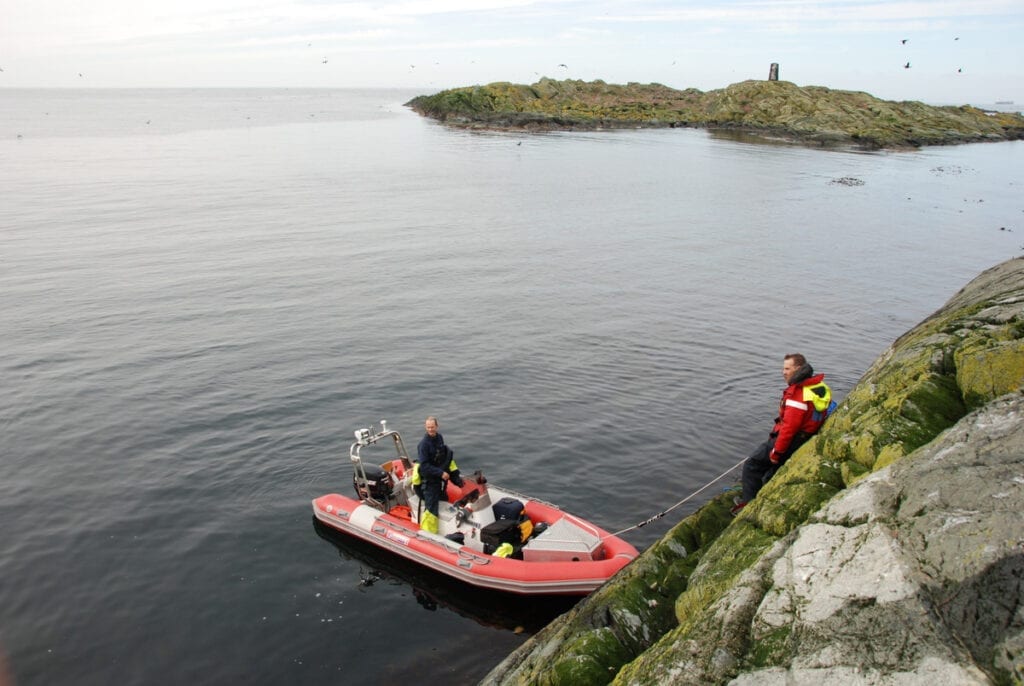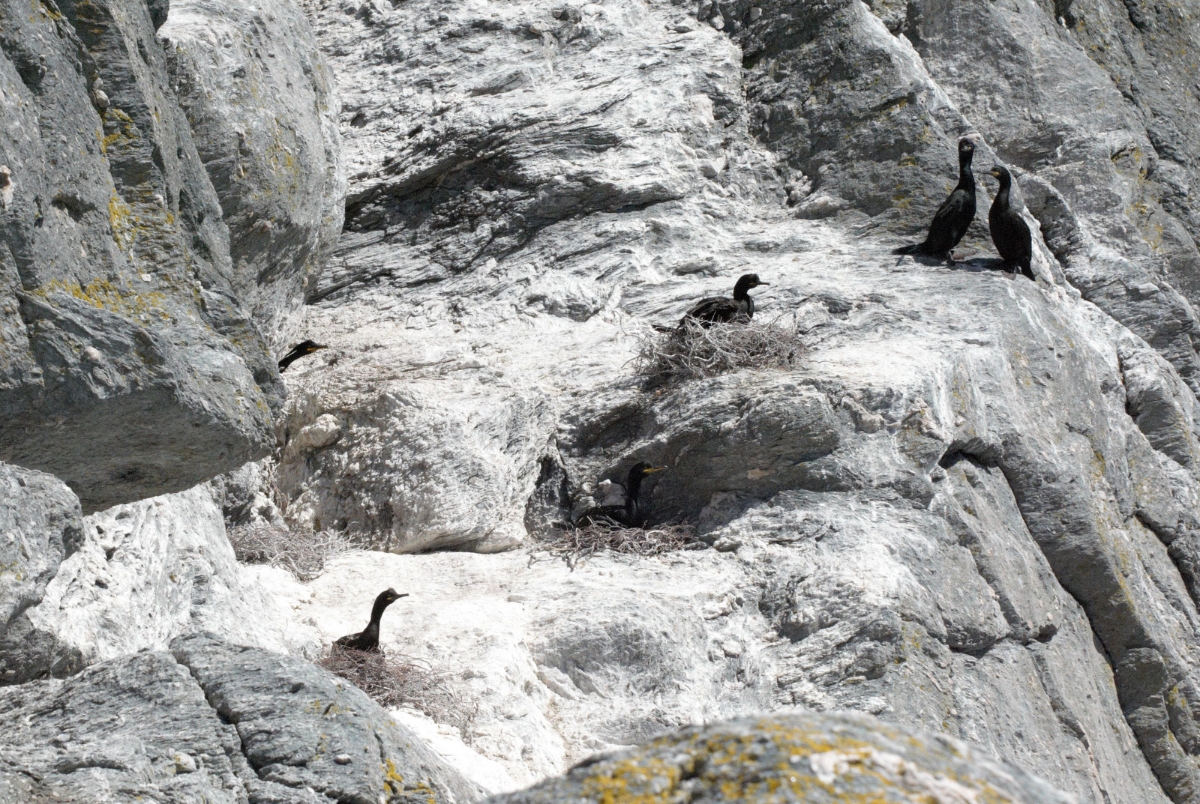Key site Rogaland
Kjørholmane Nature Reserve in the municipality of Sola is part of the Rott-Håstein-Kjør bird protection area, which became a Ramsar site in 2011. This is an important nesting area for seabirds and resting place for seals. Because Kjørholmane has one of the largest shag colonies in Norway, the reserve was established as a SEAPOP key site in 2009 under the name "Key site Rogaland". A little further north, just off Karmøy, is Jarsteinen, where SEATRACK has been working since 2014 with migration studies on shags and fulmars. Contact person: Signe Christensen-Dalsgaard, NINA

Photo: Arne Follestad
Location and description
Kjør (58° 53′ N, 5° 26’E) consists of several islands located in the extreme west of Sola, 10 km from Stavanger Airport and 7.5 km south of Håstein. The islands are low, rising to 13 meters a.s.l. The reserve covers a land area of 440 da, while the sea area is nearly 10 000 da (10 km2). The islands consists of solid rock, with many stone blocks spread over large parts of the largest island, Storekjør. Parts of the islands are covered in vegetation, partly with grassland, partly with well-developed herbaceous vegetation. Here we find several nationally rare and endangered plant and lichen species. The islands are located in a very good fishing area, and they are important migration and wintering areas for seabirds. There are many seals, including the harbour seal Phoca vitulina and grey seal Halichoerus grypus, and the latter species breeds on the islands. Apart from a small shed in the middle of Storekjør, there are no buildings. Hunting is banned all year round, but it is thought that some illegal hunting may occur.
Access
There is no harbour at Kjør, so access is only possible by small boat. The island is very exposed, so even in summer it can be difficult to land. This makes it difficult to plan and complete fieldwork. In the period 15 April – 1 August, there is a ban on landing and boat traffic within 50 meters of the islands. For the rest of the year, any visits entail a minimum of disturbance of plant and animal life. The area is therefore not suitable for or adapted to outdoor activities. Protection of the area is given first priority.

Photo: Arne Follestad
Wildlife
Kjør is the largest and most important seabird colony in Rogaland and a core area for coastal seals. The bird fauna was previously very varied, with colonies of seabirds such as shags Phalacrocorax spp., fulmars Fulmarus glacialis, eiders Somateria mollissima, razorbills Alca torda, puffins Fratercula arctica, guillemots Uria aalge, kittiwakes Rissa tridactyla, great black-backed gulls Larus marinus, herring gulls L. argentatus and lesser black-backed gulls L. fuscus. Greylag geese Anser anser have also started to breed on the islands, with several pairs producing chicks annually. Shags dominate the breeding seabirds and the population has grown rapidly from about 30 nesting pairs in the early 1970s to over 2600 pairs in 2006. Growth in the population has now probably stagnated due to the lack of nesting sites, and the birds have spread to new areas nearby. The fulmar established itself at Kjør in the late 1980s, and now 10-15 pairs (2018) breed each year. In the past, a large population of lesser black-backed gulls bred at Kjør (near 1000 pairs in 1988), but in 2005 only 50 pairs were left. There have also been major changes in the numbers of kittiwakes, herring gulls and great black-backed gulls. The kittiwake colony has disappeared and the others are greatly reduced in number. Today there are only a few pairs of razorbills. The population of puffins was around 70 pairs until the early 1980s, but has since disappeared.
Human activity
Gill netting is permitted near land, and it cannot be ruled out that drowning in these nets led to the demise of one of the country’s southernmost breeding populations of razorbills. On Storekjør, they may also have had problems with rabbits, which were introduced and which cause erosion due to digging in the soil. Until recently, there was also extensive sheep grazing.
Fieldwork
Since 2009, population numbers and breeding success of shags have been monitored annually, largely by the conservation authorities. In the past, several species, including shags, were counted at three-year intervals under the direction of County Governor and the local ornithological society. Some years, attempts were made to catch and colour-ring shags, but this was given up because the birds were quick to leave the nests during disturbances, and they could be gone for a long time before returning. The colour marking and the SEATRACK project with light-loggers were therefore moved to Jarstein outside Karmøy, where the shags breed in more sheltered sites.


